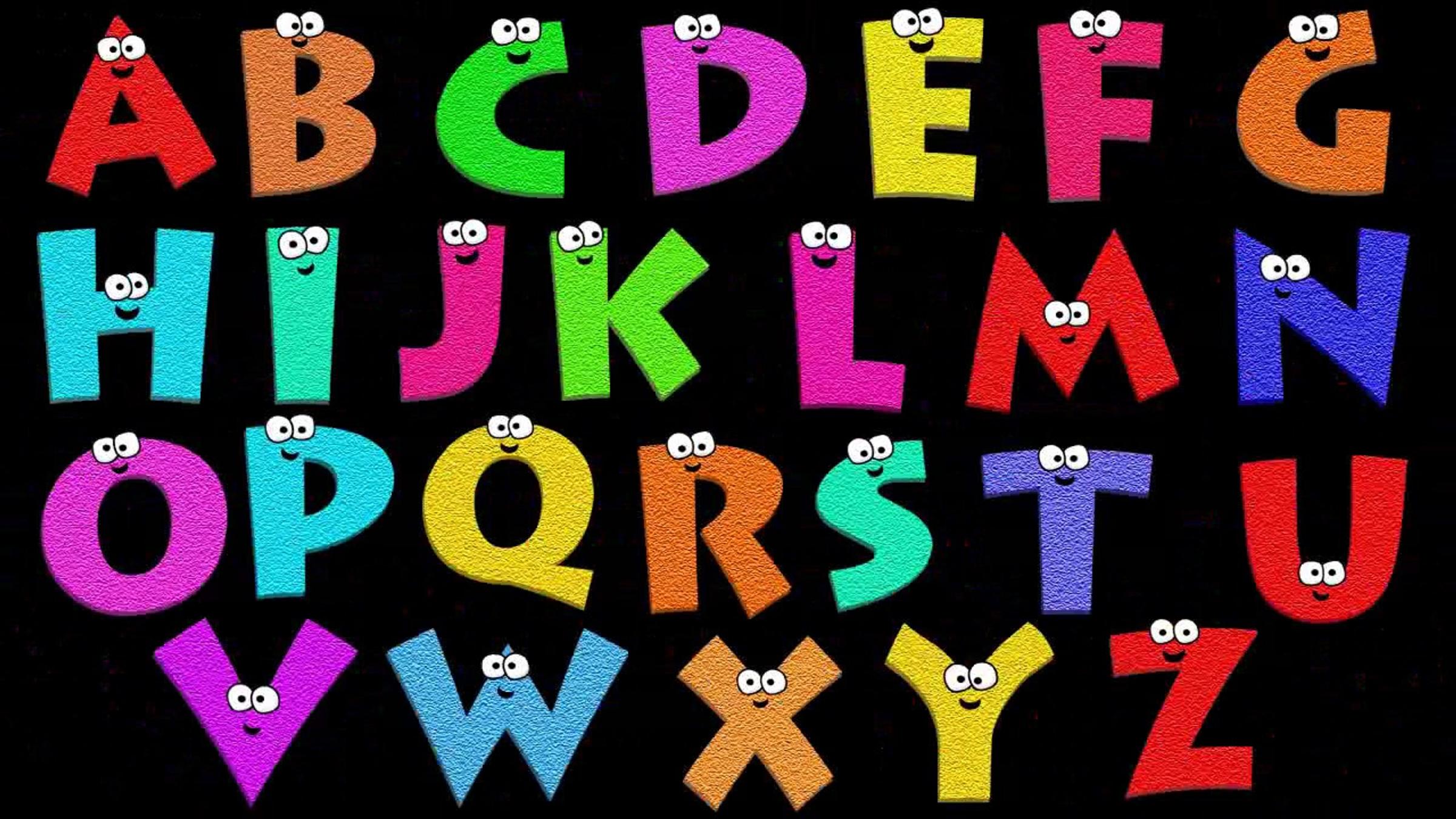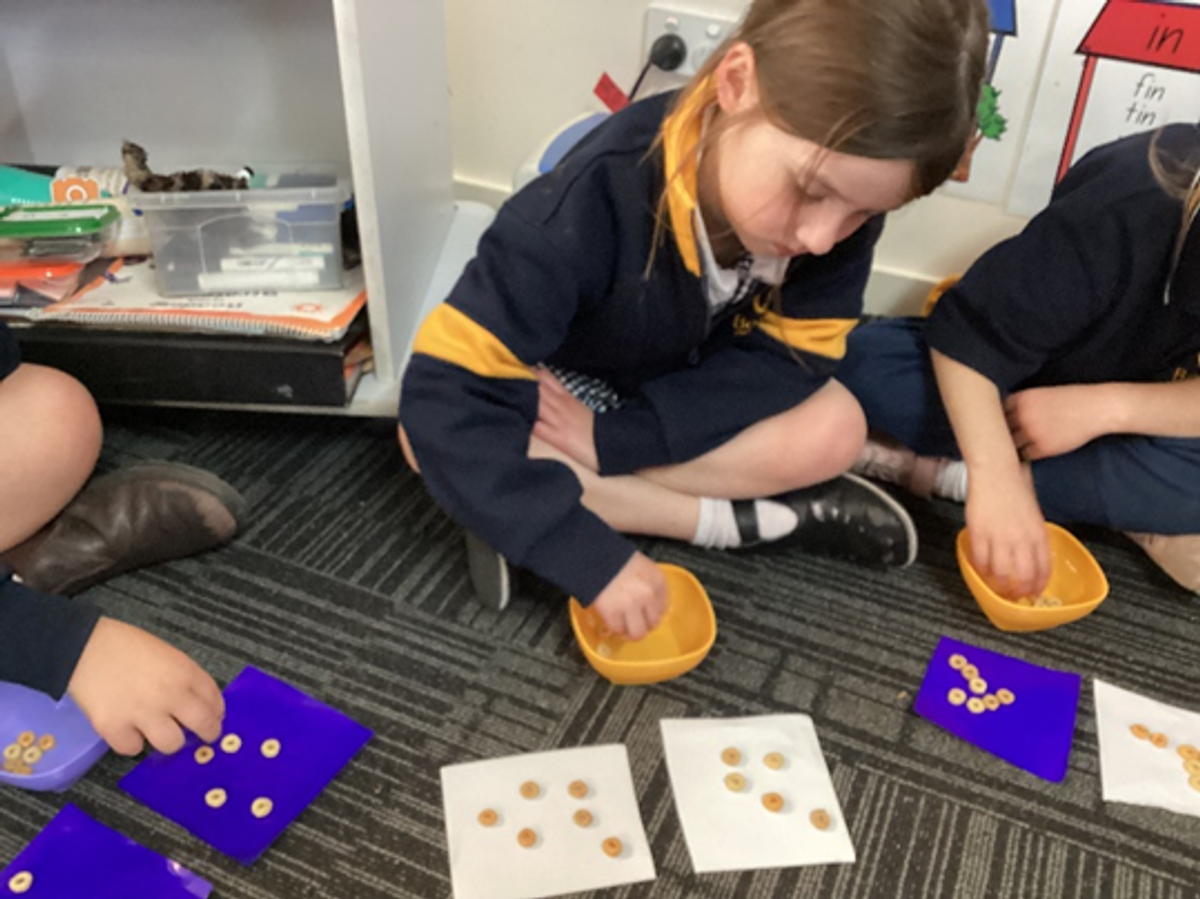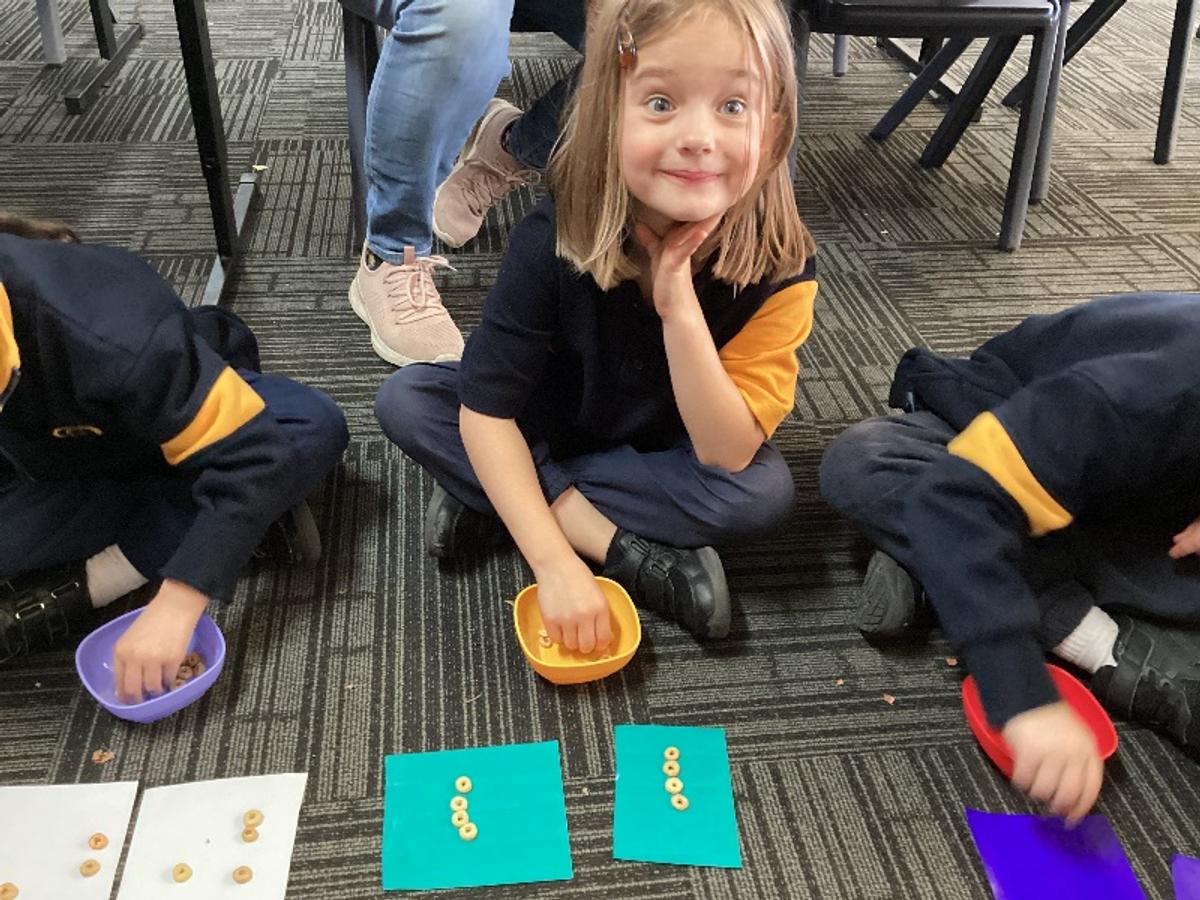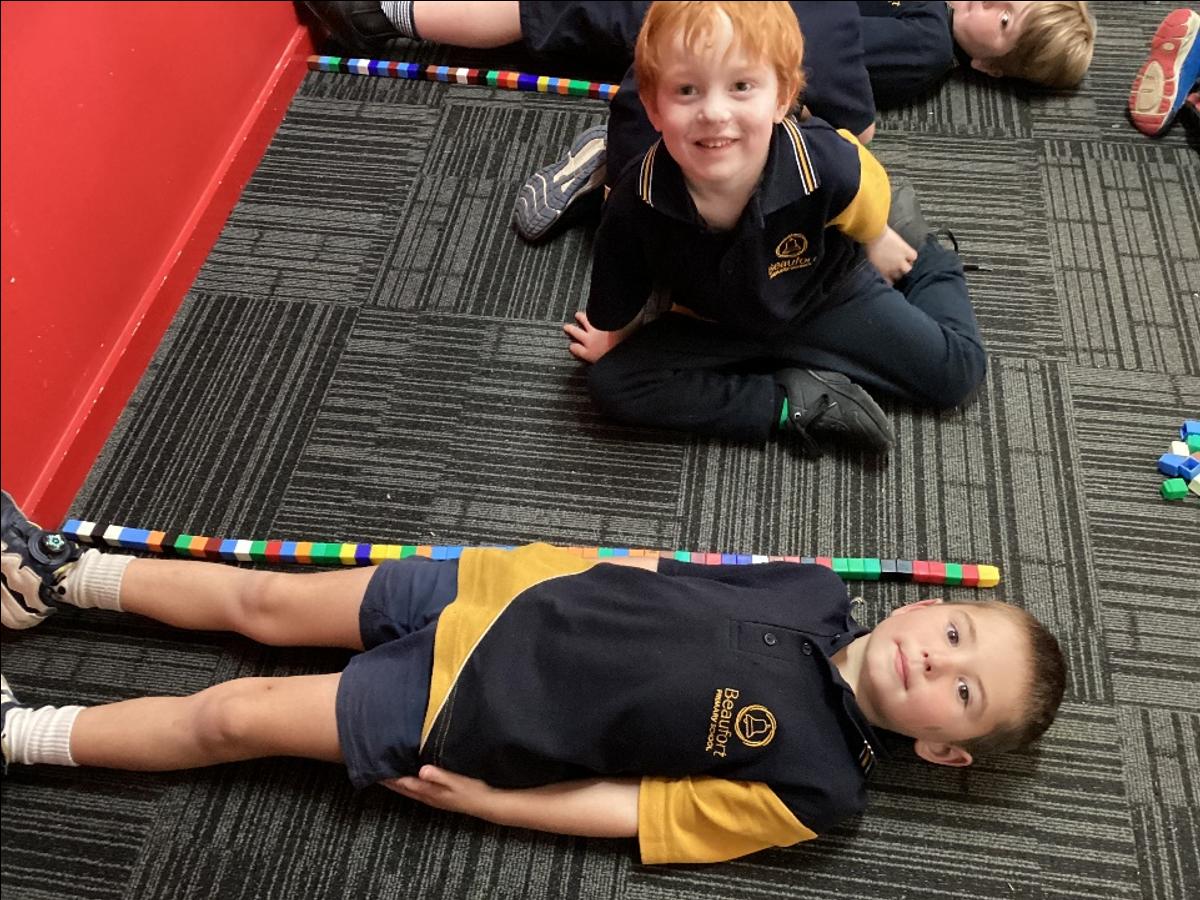Foundation Class
Miss W, supported by Mrs Novinec

Foundation Class
Miss W, supported by Mrs Novinec
Equal Sharing
In our math lessons last week, we focused on the concept of sharing, which helps explain division. Sharing involves dividing a quantity equally among individuals, allowing students to understand how much each person receives (the size of each share).
To make this concept tangible, our class used everyday objects, specifically Cheerios, and shared them between two or three plates. The students were thrilled to use Cheerios for this activity. They were asked to distribute the Cheerios equally among a set number of people, such as dividing 20 Cheerios between two people.


They were then given several questions to answer in complete sentences:
How many Cheerios do you have?
Can you share them equally between your sister/brother and you?
What does 'share equally' mean?
How do you know you have shared them equally?








The lesson was even more enjoyable because, after sharing the Cheerios equally between either two or three plates, the students got to eat them.
Measurement
At this level in Prep, students develop their understanding of uniform informal units to measure the length of objects.
When measuring and comparing length, the Prep students have been using informal units such as paperclips, blocks or counters that are of an equal size. A key understanding for the students was that the unit of measurement used to measure each object had to be the same size in order to compare objects.
The students were given access to a range of physical materials to use as uniform informal units and were provide hands-on opportunities to measure and compare different items in the classroom.
The students had fun measuring each other using blocks. Counting the large number of blocks to determine everyone's height was also a key learning activity. There were lots of giggles and laughter as they discovered who the tallest and shortest students were.





